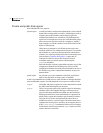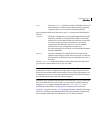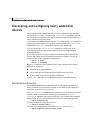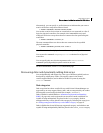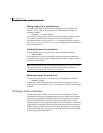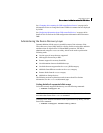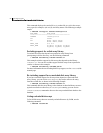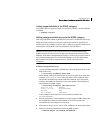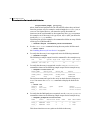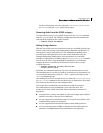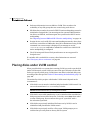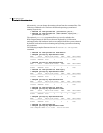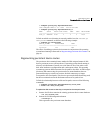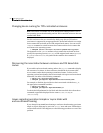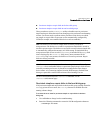
88 Administering disks
Discovering and configuring newly added disk devices
[length=serialno_length] [policy=ap]
where vendorid and productid are the VID and PID values that you found
from the previous step. For example, vendorid might be FUJITSU, IBM, or
SEAGATE. For Fujitsu devices, you must also specify the number of
characters in the serial number as the argument to the length argument
(for example, 10). If the array is of type A/A-A, A/P or A/PF, you must also
specify the
policy=ap attribute.
Continuing the previous example, the command to define an array of disks
of this type as a JBOD would be:
# vxddladm addjbod vid=SEAGATE pid=ST318404LSUN18G
5 Use the vxdctl enable command to bring the array under VxVM control.
# vxdctl enable
See “Enabling discovery of new devices” on page 84.
6 To verify that the array is now supported, enter the following command:
# vxddladm listjbod
The following is sample output from this command for the example array:
VID PID Opcode Page Code Page Offset SNO length
=============================================================
SEAGATE ALL PIDs 18 -1 36 12
7 To verify that the array is recognized, use the vxdmpadm listenclosure
command as shown in the following sample output for the example array:
# vxdmpadm listenclosure all
ENCLR_NAME ENCLR_TYPE ENCLR_SNO STATUS
=============================================================
OTHER_DISKS OTHER_DISKS OTHER_DISKS CONNECTED
Disk Disk DISKS CONNECTED
The enclosure name and type for the array are both shown as being set to
Disk. You can use the
vxdisk list command to display the disks in the
array:
# vxdisk list
DEVICE TYPE DISK GROUP STATUS
Disk_0 auto:none - - online invalid
Disk_1 auto:none - - online invalid
...
8 To verify that the DMP paths are recognized, use the vxdmpadm getdmpnode
command as shown in the following sample output for the example array:
# vxdmpadm getdmpnode enclosure=Disk
NAME STATE ENCLR-TYPE PATHS ENBL DSBL ENCLR-NAME
=============================================================
Disk_0 ENABLED Disk 2 2 0 Disk
Disk_1 ENABLED Disk 2 2 0 Disk
...
This shows that there are two paths to the disks in the array.



